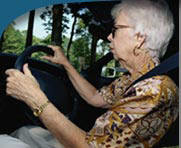Healthcare costs take a hefty portion of most retirees’ Social
Security benefits.
February 25, 2016-- In a survey conducted last year by The
Senior Citizens League, nearly one-half of survey participants reported
spending from 11 percent to 33 percent of their Social Security benefits on
Medicare premiums and out-of-pocket costs.
When planning retirement expenses, make sure to budget enough
for the growth in healthcare costs over time, says The
Senior Citizens League (TSCL).
“That can be hard to figure, but
rapidly rising healthcare costs, declining
health, and the need for increased
medical services and prescription drugs as you age will take a growing portion
of Social Security benefits,” says TSCL Chairman Ed. Cates.
According to a recent survey by TSCL, healthcare costs take a
hefty portion of most retirees’ Social Security benefits. In a survey conducted
last year, nearly one-half of survey participants reported spending from 11
percent to 33 percent of their Social Security benefits on Medicare premiums
and out-of-pocket costs. A quarter of survey participants said they paid from
34 percent to 50 percent of their Social Security benefits on healthcare.
The portion of Medicare recipients who reported spending more
than 33 percent of their Social Security benefits on healthcare costs jumped 7
percent between 2014 in 2015.
Steep cost increases in prescription drugs was
frequently cited as a major cause by 61 percent who said their drug co-pay or
coinsurance was higher than expected.
TSCL believes that the extreme cost increases could be putting
some Medicare beneficiaries at risk, especially in a year like 2016, when
retirees received no annual increase in cost-of-living adjustments (COLAS). In
2010, when retirees received no Social Security COLA, about one-third of
Medicare households said they postponed filling their prescriptions or took
less than the prescribed amount due to higher costs.
“Medicare must be given the authority to negotiate
pharmaceutical prices with manufacturers for covered Part D drugs,” says Cates.
TSCL recently submitted a statement on
prescription drug costs to the House Committee on Oversight & Government
Reform, saying “Lifesaving drugs for cancer, heart disease, arthritis,
hepatitis and other life-threatening diseases carry such enormous price tags
that older Americans worry their life savings will be drained if they are
unlucky enough to get sick.
They question why Congress hasn’t taken legislative action to
improve the system and protect the American public from price gouging.” TSCL
supports the Prescription Drug Affordability Act (S. 2023, H.R. 3513) that
would take important steps to reduce drug costs.
Is this situation happening to you? Participate in TSCL’s 2016
Senior Survey at http://www.SeniorsLeague.org.
###
With about 1 million supporters, The Senior Citizens League is
one of the nation's largest nonpartisan seniors groups. Located just outside
Washington, D.C., its mission is to promote and assist members and supporters,
to educate and alert senior citizens about their rights and freedoms as U.S.
Citizens, and to protect and defend the benefits senior citizens have earned
and paid for. The Senior Citizens League is a proud affiliate of TREA The
Enlisted Association. Please visit http://www.SeniorsLeague.org or
call 1-800-333-8725 for more information.












